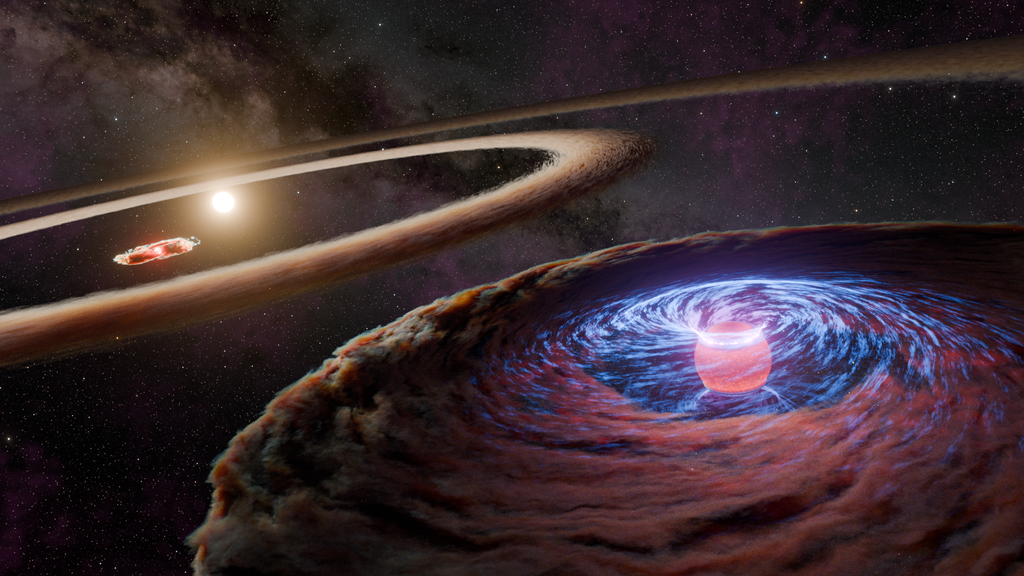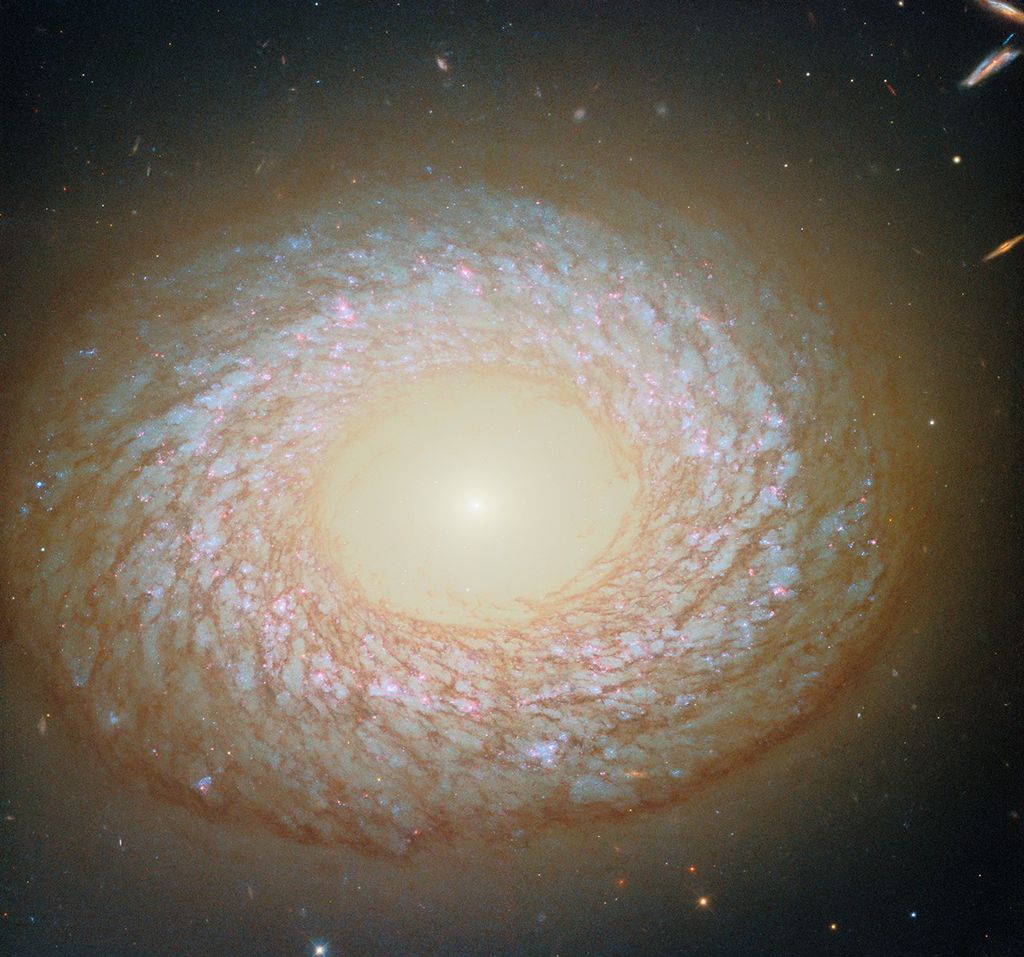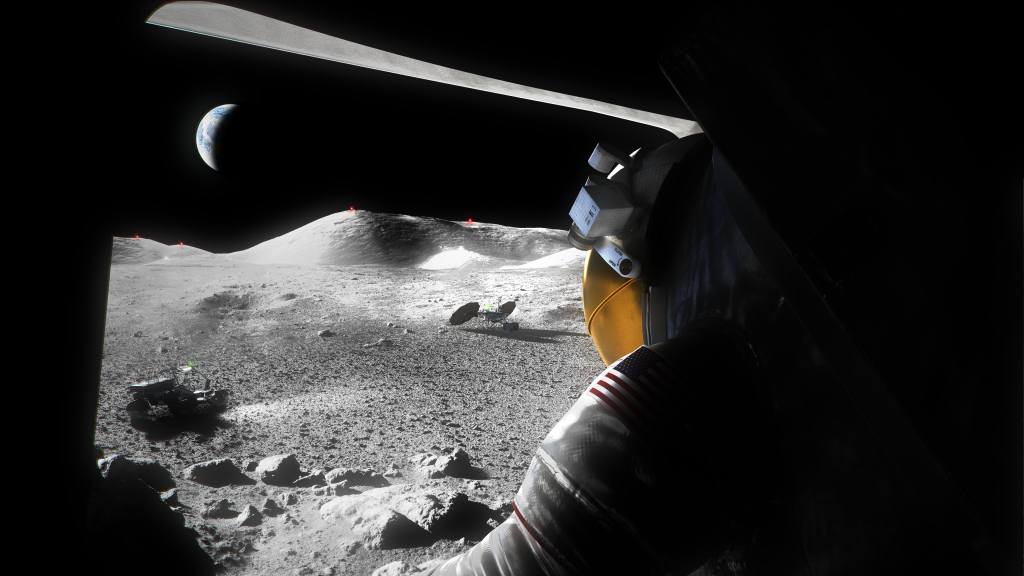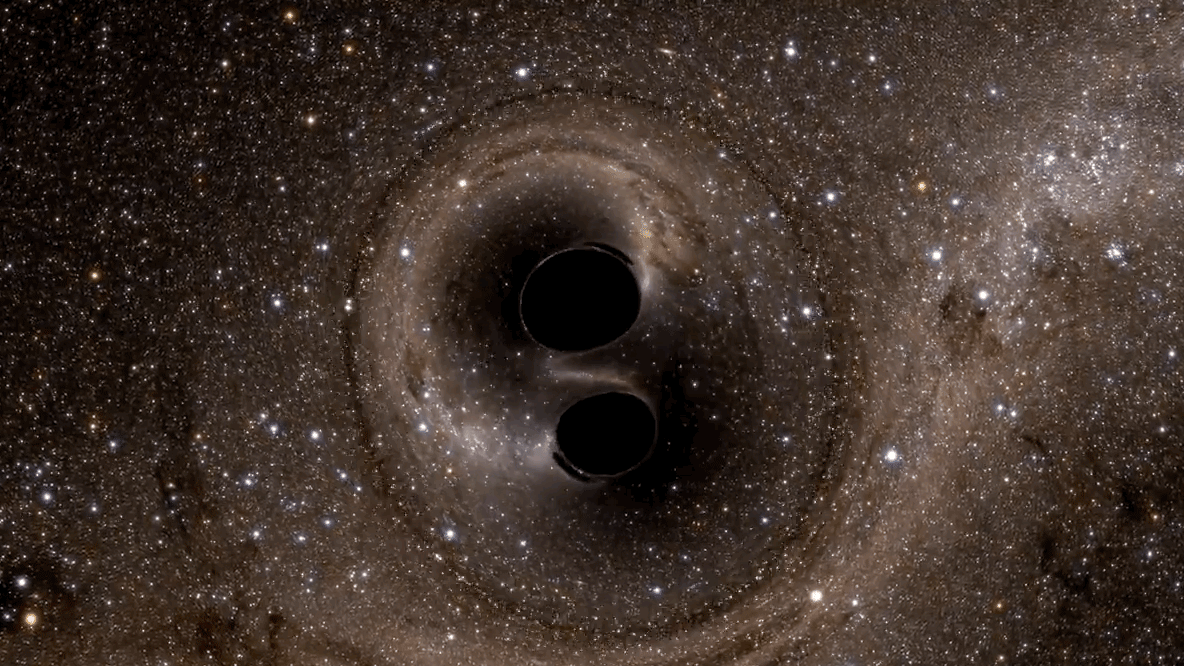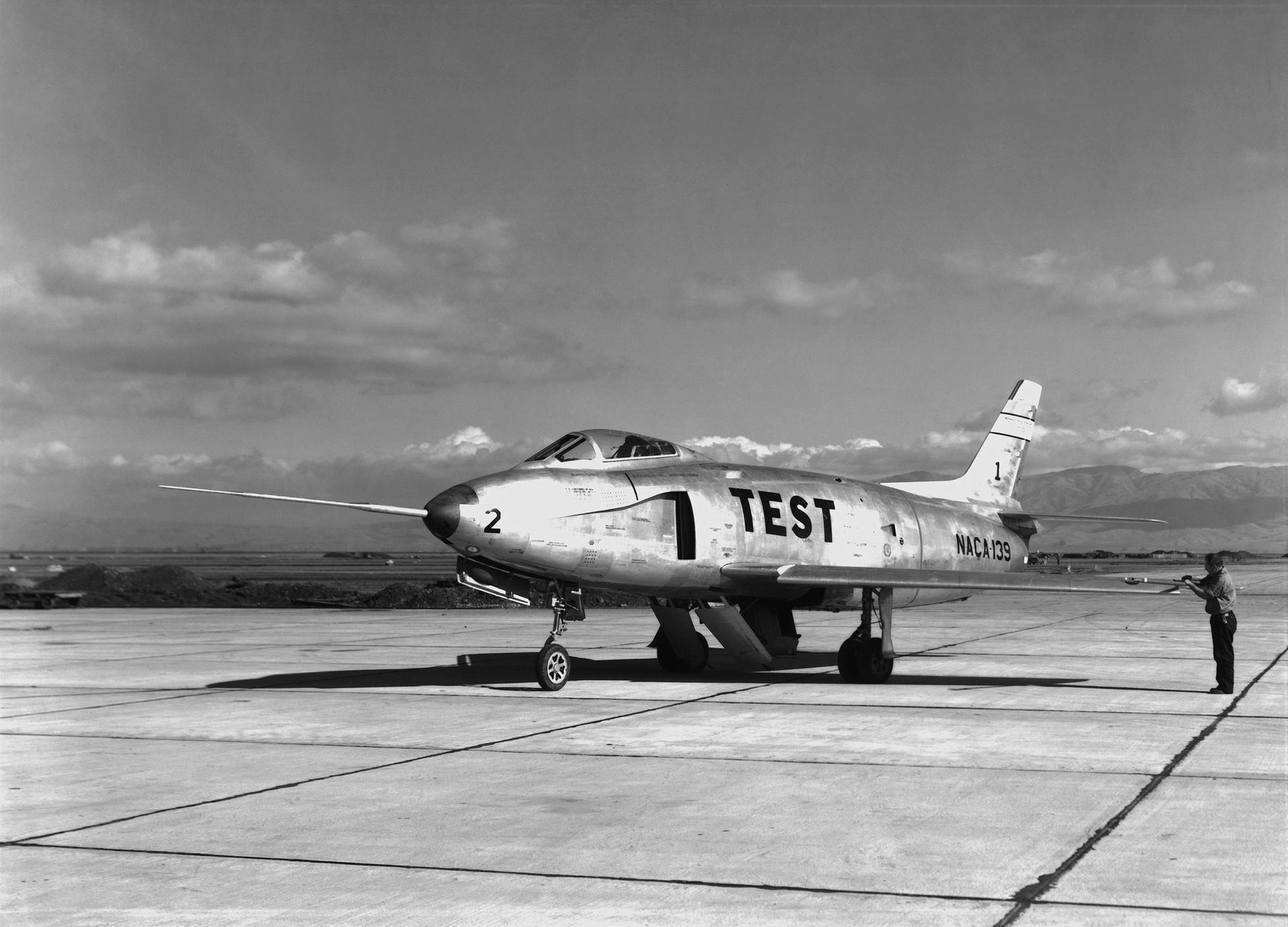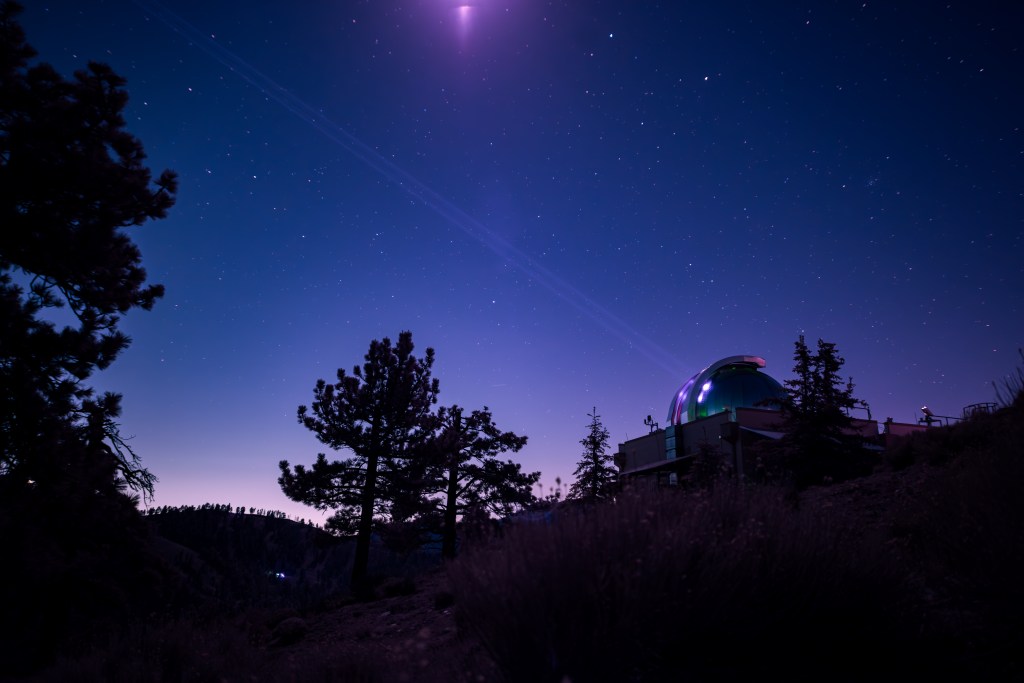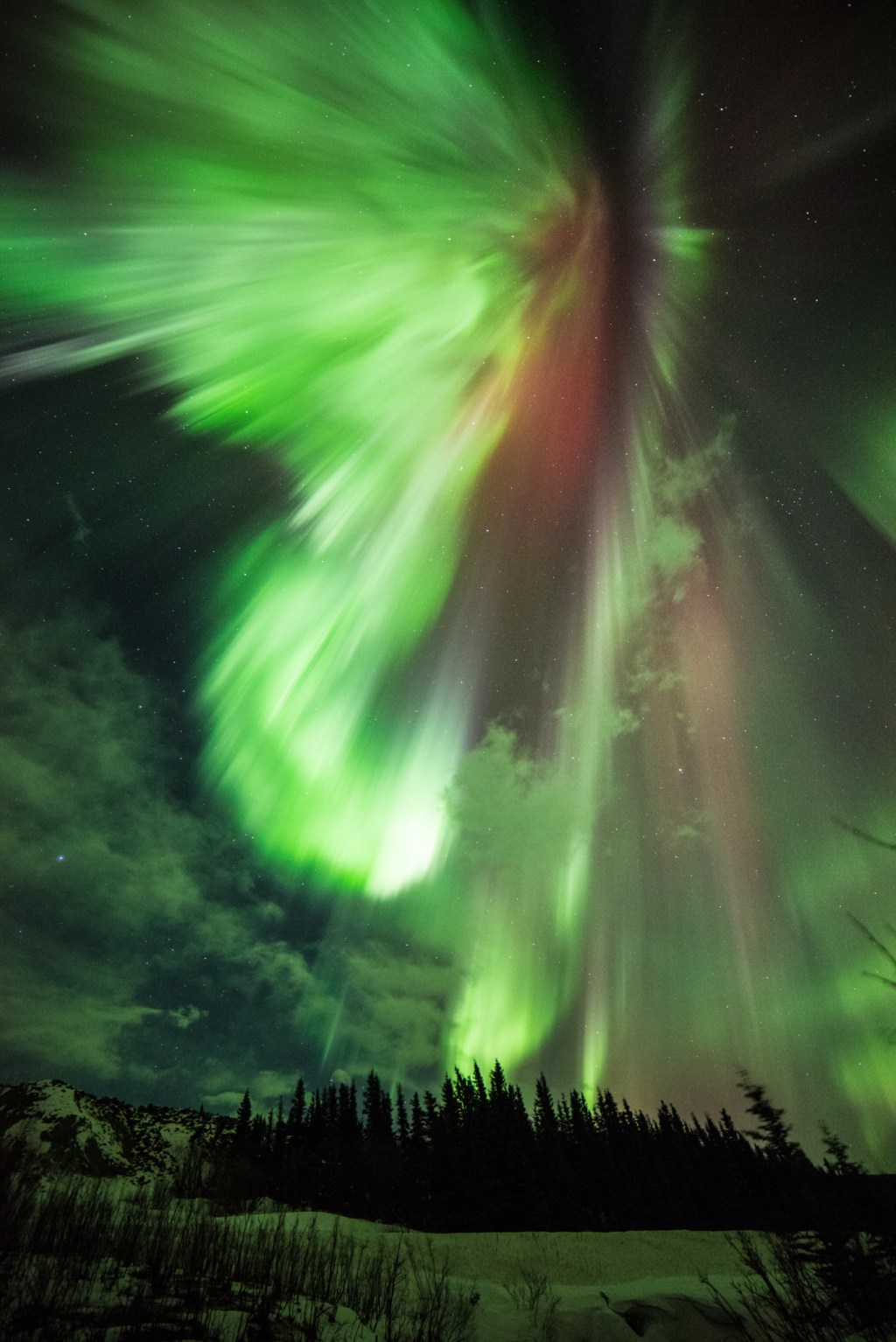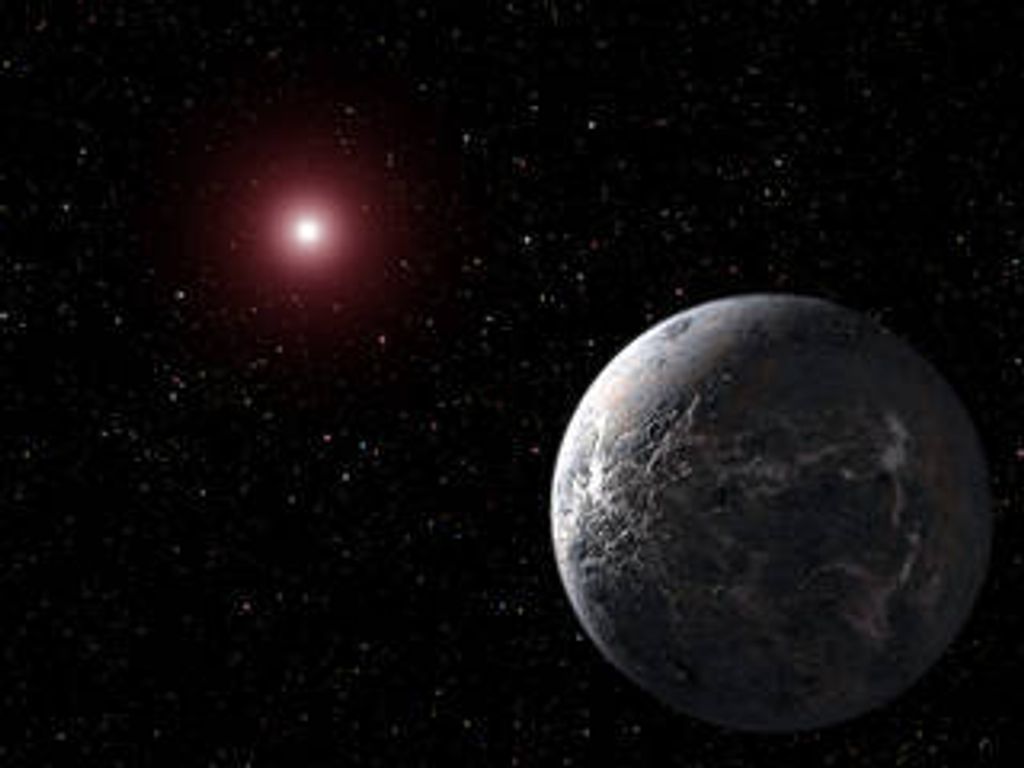1 min read
Images of Nova Cygni 1992 With Hubble’s Old and New Optics
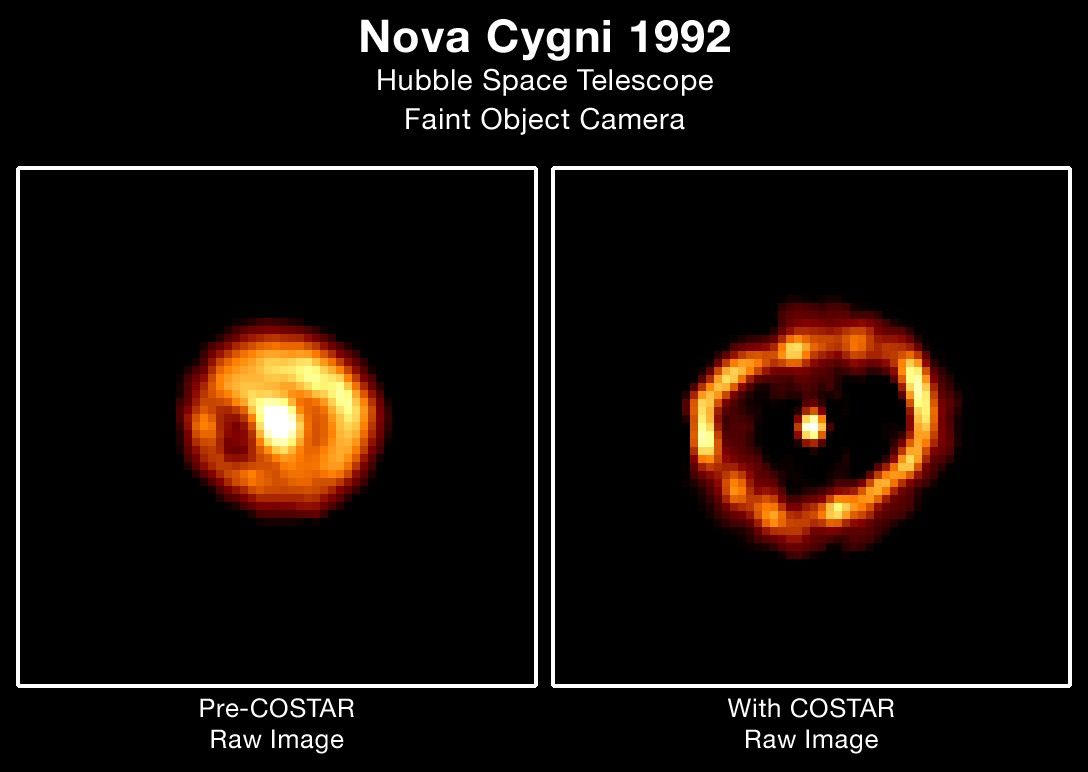
The European Space Agency's ESA Faint Object Camera utilizing the corrective optics provided by NASA's COSTAR (Corrective Optics Space Telescope Axial Replacement), has given astronomers their best look yet at a rapidly ballooning bubble of gas blasted off a star.
The shell surrounds Nova Cygni 1992, which erupted on February 19, 1992. A nova is a thermonuclear explosion that occurs on the surface of a white dwarf star in a double star system.
The new HST image [right] reveals an elliptical and slightly lumpy ring-like structure. The ring is the edge of a bubble of hot gas blasted into space by the nova. The shell is so thin that the FOC does not resolve its true thickness, even with HST's restored vision.
An HST image taken on May 31 1993, [left] 467 days after the explosion, provided the first glimpse of the ring and a mysterious bar-like structure. But the image interpretation was severely hampered by HST's optical aberration, that scattered light from the central star which contaminated the ring's image.
A comparison of the pre and post COSTAR/FOC images reveals that the ring has evolved in the seven months that have elapsed between the two observations. The ring has expanded from a diameter of approximately 74 to 96 billion miles.
The bar-like structure seen in the earlier HST image has disappear. These changes might confirm theories that the bar was produced by a dense layer of gas thrown off in the orbital plane of the double star system. The gas has subsequently grown more tenuous and so the bar has faded.
The ring has also grown noticeably more oblong since the earlier image. This suggests the hot gas is escaping more rapidly above and below the system's orbital plane. As the gas continues escaping the ring should grow increasingly egg-shaped in the coming years.
HST's newly improved sensitivity and high resolution provides a unique opportunity to understand the novae by resolving the effects of the explosion long before they can be resolved in ground based telescopes.
Nova Cygni is 10,430 light years away (as measured directly from the ring's diameter), and located in the summer constellation Cygnus the Swan.
About the Object
- R.A. PositionR.A. PositionRight ascension – analogous to longitude – is one component of an object's position.20h 30m 31.66s
- Dec. PositionDec. PositionDeclination – analogous to latitude – is one component of an object's position.52° 37' 50.8"
- Object NameObject NameA name or catalog number that astronomers use to identify an astronomical object.Nova Cygni 1992
- Release DateJanuary 13, 1994
- Science ReleaseHubble Sees Changes in Gas Shell around Nova Cygni 1992
- Credit
Share
Details
Claire Andreoli
NASA’s Goddard Space Flight Center
Greenbelt, Maryland
claire.andreoli@nasa.gov

